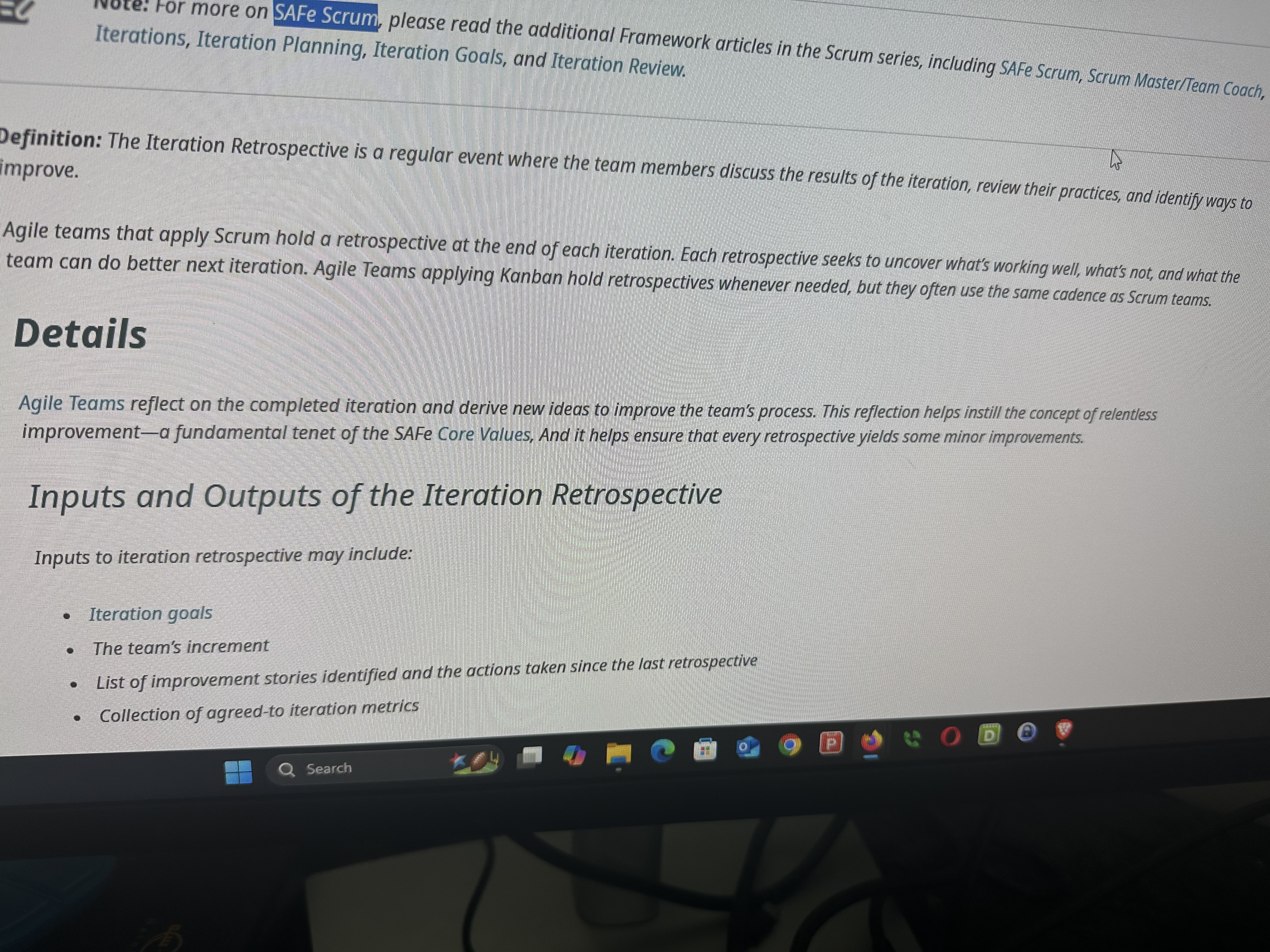Provide context about iteration retrospective in Agile and Scrum methodologies.

Understand the Problem
The provided text is about the 'Iteration Retrospective' in Agile and Scrum methodologies. It explains the definition, details, and inputs/outputs of the iteration retrospective. The user has simply uploaded an image of this text.
Answer
Iteration retrospective is where team members discuss results, review practices, and identify improvements at the end of each iteration.
An iteration retrospective is a recurring event where team members discuss the outcomes of an iteration, analyze their methods, and find possibilities for development. Scrum teams have a retrospective at the end of each iteration to determine what is working, what is not, and what can be improved for the next iteration. Kanban teams hold retrospectives as needed, typically following the same cadence as Scrum teams.
Answer for screen readers
An iteration retrospective is a recurring event where team members discuss the outcomes of an iteration, analyze their methods, and find possibilities for development. Scrum teams have a retrospective at the end of each iteration to determine what is working, what is not, and what can be improved for the next iteration. Kanban teams hold retrospectives as needed, typically following the same cadence as Scrum teams.
More Information
The inputs to the iteration retrospective may include iteration goals, the team's increment, a list of improvement stories identified, and the actions taken since the last retrospective and collection of agreed-to iteration metrics.
Tips
Do not confuse iteration review with iteration retrospective in Agile and Scrum methodologies.
Sources
- Iteration Retrospective - Scaled Agile Framework - scaledagileframework.com
AI-generated content may contain errors. Please verify critical information